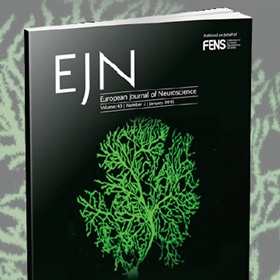
Oscar Marín
@MarinLab
Followers
4K
Following
1K
Media
134
Statuses
2K
Brain development and function @KingsCollegeLon Also science policy and, occasionally, food & drinks. Blame Oscar for the views expressed here.
London, UK
Joined March 2012
Exciting work from @MarinLab in @CellCellPress, revealing a mechanism regulating the development of parvalbumin (PV) interneurons. Their study uncovers a postnatal molecular switch driving the activity-dependent maturation of these cells in the cortex.
cell.com
Neuronal activity triggers PGC-1α-mediated transcriptional programs that drive the late maturation of PV+ interneurons, essential for cortical circuit function. PGC-1α partners with ERRγ and Mef2c to...
0
3
13
10/10 Here’s the paper @CellCellPress if you want to dig in https://t.co/R94qlCglm6 That’s it. Thanks for sharing! @dev_neuro @MRC_CNDD @KingsIoPPN @wellcometrust
cell.com
Neuronal activity triggers PGC-1α-mediated transcriptional programs that drive the late maturation of PV+ interneurons, essential for cortical circuit function. PGC-1α partners with ERRγ and Mef2c to...
1
1
5
9/10 In sum, our findings reveal a postnatal molecular switch that drives the activity-dependent maturation of parvalbumin interneurons, a critical population for cortical function. Funded by the @wellcometrust
1
0
2
8/10 Importantly, this mechanism also allows PV interneurons to regulate their mitochondrial content and function, which may also contribute to their maturation
1
0
1
7/10 PGC-1alpha cooperates with ERR-gamma to directly regulate the transcription of many PV-enriched genes. Incidentally, it also seems involved in repressing genes that are typically enriched in other cells, like SST interneurons
1
0
2
6/10 How is this achieved? We discovered that PGC-1alpha regulates the expression of most genes that are typically enriched in mature PV interneurons
1
0
1
5/10 What are the mechanisms regulating the protracted maturation of cortical interneurons? We found that this process requires neuronal activity and is mediated by the transcriptional modulator PGC-1alpha
1
0
1
4/10 Interestingly, while PV interneurons are generated in the embryo, they are late bloomers: in humans, for example, it takes more than two years for PV interneurons to acquire their mature properties
1
0
2
3/10 Several unique properties distinguish PV interneurons: They exert a very tight control over the output of pyramidal cells; are fast-spiking, meaning they can fire action potentials at very high frequencies; are covered by perineuronal nets, and have many mitochondria
1
0
1
2/10 PV interneurons are a type of inhibitory neuron in the cortex, characterized by their expression of the calcium-binding protein parvalbumin. These neurons play a crucial role in regulating neuronal activity and are involved in memory, sensory processing, and motor control.
1
0
3
1/10 Our latest research, led by Monika Moissidis, identifies a mechanism regulating the maturation of PV interneurons in the cerebral #cortex. This is the story @CellCellPress
https://t.co/R94qlCglm6 ⬇︎ thread @dev_neuro @MRC_CNDD @KingsIoPPN @KingsCollegeLon @wellcometrust
cell.com
Neuronal activity triggers PGC-1α-mediated transcriptional programs that drive the late maturation of PV+ interneurons, essential for cortical circuit function. PGC-1α partners with ERRγ and Mef2c to...
1
18
64
I am excited to announce that the Ciceri lab will open its doors in September 2025 at the San Raffaele Telethon Institute for Gene Therapy, SR-TIGET! @SanRaffaeleMI @Fondaz_Telethon
16
7
64
We're #hiring! Looking for an experienced and dynamic Research Strategy Manager... More details in link below Deadline 09 July https://t.co/ymHwYZxrqg
0
6
2
La enfermedad metastásica: cada vez más cerca de una cura o de poder evitarla. Nuestros premiados, el Dr. Eduard Batlle, jefe de @BatlleLab en @IRBBarcelona, y el Dr. Óscar Marín, jefe de @MarinLab en @KingsCollegeLon, ambos premiados en ediciones anteriores y actuales miembros
0
1
3
Our study on the impact of altered serotonin (5-HT) signalling on developing sensory cortex is now live @NatureComms We use longitudinal in vivo imaging of 5-HT & neural activity to show that this neuromodulator is buffered in early life to promote bottom-up instruction.
3
22
63
#Neurociencia | 🧠 El neurocientífico @Marinlab, del @KingsCollegeLon, explica las posibles intervenciones del #cerebro en desarrollo para acotar trastornos del neurodesarrollo. ✍ @alilo1920
https://t.co/nX0OoFQZQn
diariomedico.com
Cada vez se conoce con más precisión la diversidad de neuronas durante el neurodesarrollo. Se abren vías a fármacos con especificidad celular y al desarrollo de terapias génicas.
0
1
4
#Neurociencia | 🧠 El neurocientífico @Marinlab, del @KingsCollegeLon, explica las posibles intervenciones del #cerebro en desarrollo para acotar trastornos del neurodesarrollo. ✍ @alilo1920
https://t.co/oBEeATlHWw
diariomedico.com
Cada vez se conoce con más precisión la diversidad de neuronas durante el neurodesarrollo. Se abren vías a fármacos con especificidad celular y al desarrollo de terapias génicas.
0
4
6
JUST PUBLISHED Development of GABAergic Interneurons in the Human Cerebral Cortex Oscar Marín @MarinLab of @KingsCollegeLon
@FENSorg @WileyNeuro #Gaba #Neurons
https://t.co/kTrLNMv5nD
onlinelibrary.wiley.com
Recent research is starting to shed light on the cellular and molecular processes that regulate the development of cortical GABAergic interneurons in humans, tracing their formation in the foetal...
0
13
35
1/12. How do cortical interneurons select specific pyramidal cells during development? Julie Jezequel in @Rico_lab has identified specific cellular and molecular codes that interneurons use to target pyramidal cell types @NatureComms @dev_neuro @MRC_CNDD @KingsIoPPN
3
29
102
OUT NOW in @EJNeuroscience Development of GABAergic Interneurons in the Human Cerebral Cortex Oscar Marín @MarinLab of @KingsCollegeLon
@FENSorg @WileyNeuro #Gaba #Neurons
https://t.co/KyyMjpr74v
onlinelibrary.wiley.com
Recent research is starting to shed light on the cellular and molecular processes that regulate the development of cortical GABAergic interneurons in humans, tracing their formation in the foetal...
0
7
10












